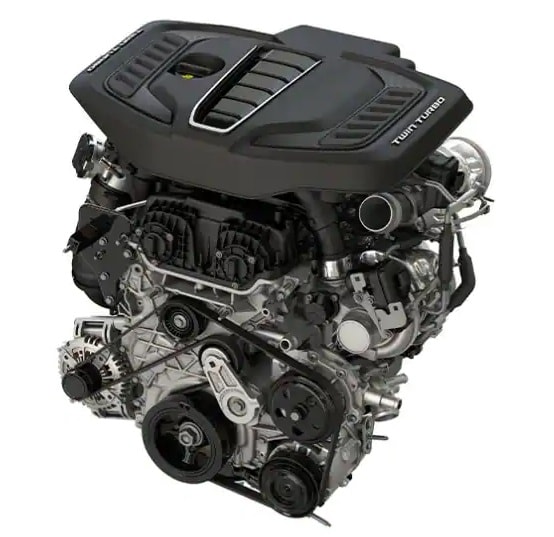|
|---|
Hurricane Inline Six-Cylinder Engines are the New Engines of Choice
Inline 6 Engines Comeback
Since the early 1900s, the V-style engine has been the go-to powerplant for many vehicle manufacturers including Dodge, Jeep, RAM, and Chrysler. They are most commonly available as V6 or V8 engines. They made it easy for automakers to stuff the maximum in the minimum amount of space. But the reality is that inline 6 cylinder engines have powered some of the greatest cars ever made. Also known as a "straight six engine", these engines have been found in everything from a sports car to an SUV.
Both engine layouts have pros and cons but a turbocharged I6 engine turns out to be quite the package for a rear-wheel drive vehicle with top-notch balance and smoothness.
Inline Six Engine Benefits
The layout of an inline 6 engine is more balanced than that of a V6. Pistons move in pairs, which help to balance the weight of being pushed inside the engine. A V6 will be less of a smooth operator with more vibrations appearing as the revolutions per minute (RPM) climb. To counteract the roughness, engine engineers have added balance shafts to smooth out the vibrations in the I6 engine. Because I6 engines don't have this balance issue, they are capable of higher redlines than a V6 or V8 engine.
There are some space-saving benefits, too. Most times, an I6 engine will be too long to lower the front wheels, but when mounted in a longitudinal manner, there is sufficient space on either side of the engine to mount a turbocharger or two. This makes it ideal to be a part of a high-performance or even hybrid powerplant. Which brings us to our next topic:

Hurricane Engine- An Inline 6 Engine
Other manufacturers are already in the thick of things with the new turbocharged inline six-cylinder engines. Stellantis made some serious news with the announcement that it would be the time for the last call of supercharged HEMI engines. The company, which results from a merger between Fiat Chrysler Automobiles and Peugeot Group, announced they were phasing out the supercharged HEMI engines in favor of a new breed of powerplants: The Hurricane engine. Made of a straight or inline six-cylinder engine, the Hurricane engine would be a twin-turbocharged engine that will be capable of various power outputs, carrying Chrysler, Dodge, Jeep, and RAM vehicles into the future. It will first appear in the new Grand Wagoneer SUV and will eventually make its way through the rest of the lineup as time goes on./p>
Hurricane Engine: What's so great about it?
A hurricane isn't on everyone's list of favorite things especially in Florida, but it could end up on yours. The new Standard Output Hurricane engine will be a 3.0L inline 6 engine producing 400+ horsepower and 450 lb-ft of torque. The twin-turbochargers will provide 22 lbs. per square inch of boost, while the 5.7-liter HEMI V8 that it replaces only makes 363 horsepower and 394 lb-ft of torque.
The larger 6.4-liter HEMI makes 470-485 horsepower and 470-474 lb-ft of torque. Compare that to the new High Output Hurricane engine (inline six-cylinder engine). Receiving 26 PSI, it delivers more than 500 horsepower and more than 475 lb-ft of torque.
New Inline Six-Cylinder Hurricane Engine FAQ
Which car companies use Inline 6 Engines?
What is an Inline 6 Engine?
Chrysler, Dodge, Jeep, and RAM Hurricane Engine
At Napleton's Northlake CDJR Dealership in Northlake near West Palm Beach, we have all the latest technology. Stop in today or fill out the free online form so we can tell you more about the new Chrysler, RAM, Jeep, and Dodge Hurricane engine that is making its way into the new models. This Inline 6 engine is the future for Dodge, Jeep, RAM, and Chrysler. The new engine will allow models to have larger torque and perform faster overall. Keep in touch to find out what models are next in line to get the new Hurricane engine.
Learn more about the Hurricane Engine- Inline 6 engine on CDJR modelsFill out to learn more below.
* Indicates a required field

